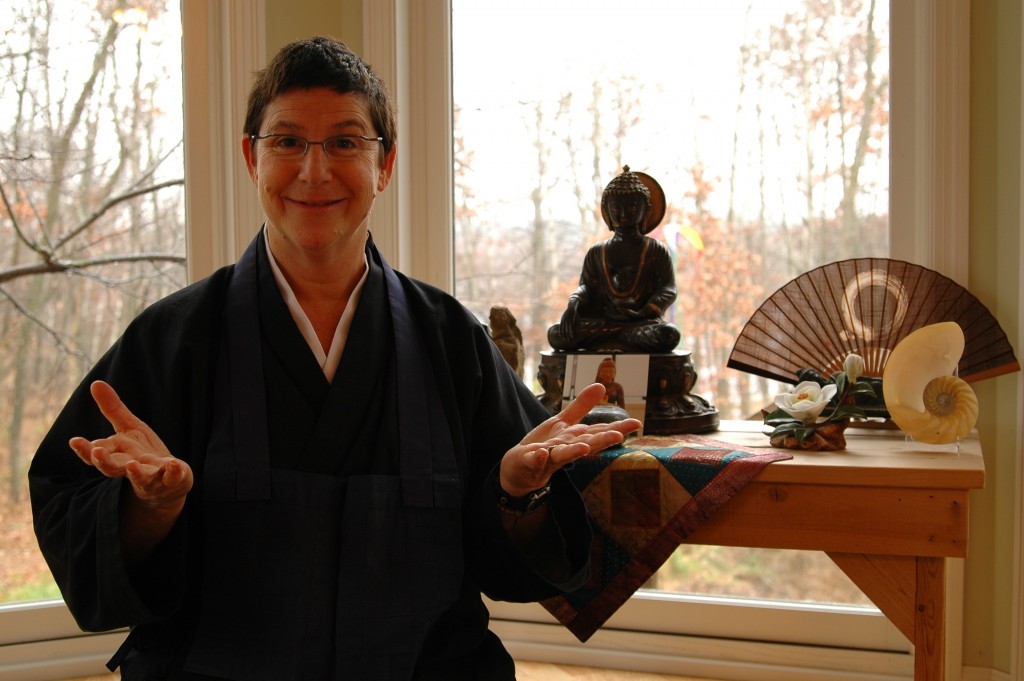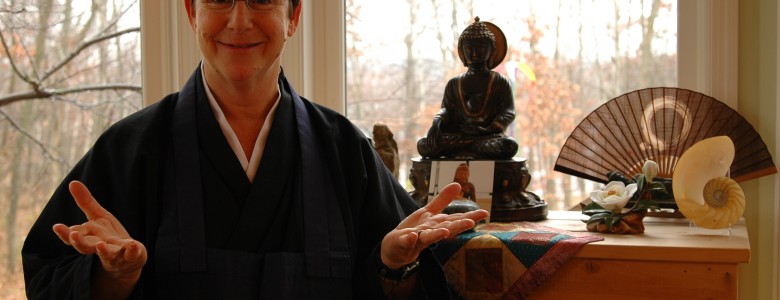“I also have been most moved by Trisha herself. She is a women filled with integrity and honesty and directness. Knowing her has changed the way i hold myself as a human being.”
 Judith Ragir danced in Trisha Brown’s company in the mid-to-late 1970s.
Judith Ragir danced in Trisha Brown’s company in the mid-to-late 1970s.
Q: What was your first encounter with Trisha Brown’s work?
Judith Ragir: I saw Trisha first in the Grand Union at the Walker Art Center in Minneapolis, Minnesota. Seeing the Grand Union free improvise really changed my artistic life. I came to New York after that to study. I was planning on being a choreographer myself and I just wanted to learn from the New York dance scene in the late 70s. Trisha was teaching an improv class in her studio during the fall which I attended. Little did I know that she was using that class as an audition. When it was done she invited Mona Sultzman and I into her first “dance” company—before that she had mostly done equipment pieces and pedestrian movement choreography. When she asked me to be in her company, she mentioned that she was also inviting Elizabeth Garren from Minneapolis into the company. I had a good laugh. Elizabeth and I had been very close friends in Minneapolis, prior to my moving to New York City! What a coincidence and a blessing. I could continue to dance with Elizabeth.
Q: What were rehearsals like?
JR: When this first “dance” company began, Trisha did not know whether other dancers could dance her movement. So we were really quite an experiment. I was taught in the Wigman style of space, time, and energy and improvisation and I think that actually helped me to observe and copy her movement. We all took release work from Elaine Summers next door so that we would be free enough to move like Trisha. We worked in Trisha’s home loft every day and worked hard. We learned Locus and Primary Accumulation first. Then we made Line Up by improvising for twenty seconds and then remembering what we did. That was a blast. Occasionally we made our own movement phrases but i think mostly we learned her movement backwards and forwards and upside down! Also, almost all the work I performed in was danced in silence.
Q: If you had one Trisha Brown dance to take with you to a desert isle what would it be and why?
JR: I left the company before Trisha really started moving through space which was a real shame for me. I left too soon in my arrogant eagerness to do my own work. But I loved Locus. It was the closest to jazz improvisation, which I adored, that the dance world had seen up to that time. I also loved a section we called “humming” which was very small, delicate, pedestrian movement all done in a close knit clump in the front center of the stage. Gorgeous.
Q: How did Trisha’s dances evolve during your time with the company?
JR: For me, the four years or so right after I left were the most exciting. Seeing her start to move in space and making pieces like Opal Loop, Set and Reset, and Glacial Decoy.
Q: From your close interaction with Brown, what stays with you the most about Trisha’s work today?
 JR: Learning to move organically with both smoothness and accents. Learning to get out of “performing for the audience” and just being a body in space moving. I have never moved as brilliantly since, and the movement was not exactly “technical” like you would learn in dance class. (Although now I understand that some “Trisha Brown Style” is taught and copied everywhere.) It was total body movement and free joyous joints. Unfortunately the current “Trisha Brown Style” seems to miss what was most innovative about her movement but so be it. Its quirkiness, its accent, its unpredictableness, for example. I also have been most moved by Trisha herself. She is a women filled with integrity and honesty and directness. Knowing her has changed the way i hold myself as a human being. She was not easily pushed around by fashion and yet she had to hold herself upright in the face of so much pressure and responsibility. To this day I feel this personal influence very strongly.
JR: Learning to move organically with both smoothness and accents. Learning to get out of “performing for the audience” and just being a body in space moving. I have never moved as brilliantly since, and the movement was not exactly “technical” like you would learn in dance class. (Although now I understand that some “Trisha Brown Style” is taught and copied everywhere.) It was total body movement and free joyous joints. Unfortunately the current “Trisha Brown Style” seems to miss what was most innovative about her movement but so be it. Its quirkiness, its accent, its unpredictableness, for example. I also have been most moved by Trisha herself. She is a women filled with integrity and honesty and directness. Knowing her has changed the way i hold myself as a human being. She was not easily pushed around by fashion and yet she had to hold herself upright in the face of so much pressure and responsibility. To this day I feel this personal influence very strongly.
Top photo: Judith Ragir, photo by Tim Francisco. Bottom photo: Dancing with Trisha Brown, photo by Babette Mangolte.

